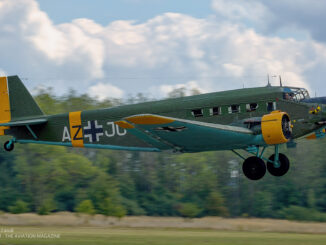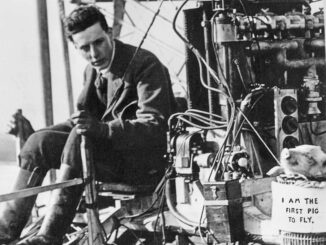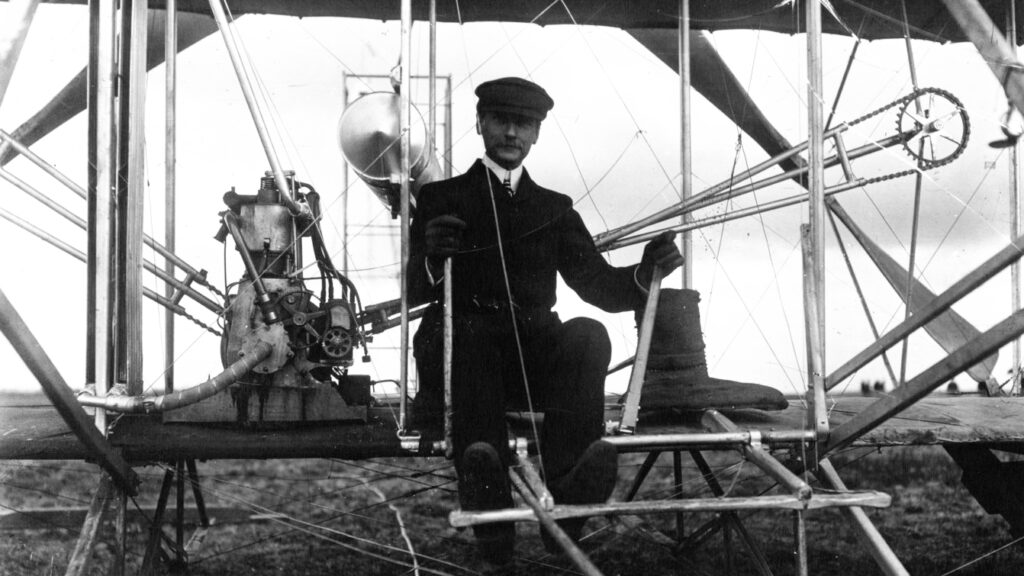 On 18th October 1909, Charles de Lambert, flying Wright Model A aeroplane, became the first person to circle the Eiffel Tower with an aircraft.
On 18th October 1909, Charles de Lambert, flying Wright Model A aeroplane, became the first person to circle the Eiffel Tower with an aircraft.
Charles Alexandre Maurice Joseph Marie Jules Stanislas Jacques Count de Lambert was born in 1865 in Funchal, the largest city of Madeira. He spent his childhood in Pau, France, together with his friend Paul, the son of French scientist and aeronaut, Gaston Tissandier. In 1883, Gaston and his brother Albert performed a successful maiden flight of an electric powered airship they developed. Gaston Tissandier was also known of his escape in a balloon from the besieged Paris, in September of 1870.
In 1891, de Lambert graduated from technical school and became an engineer. Shortly after, he began to develop hydrofoils and, in 1907, took part in a motorboat competition in Monaco with a boat he designed.
In 1908, de Lambert met Wilbur Wright who arrived to France for demonstration flights. The Wright aeroplane immediately sparked interest of the young engineer. Shortly after, de Lambert asked Wilbur Wright to teach him to fly. The French aviation pioneer completed his first flying lesson on 28th October 1908, performing three flights in double-seat Wright biplane, lasting 12, 8 and 15 minutes, respectively
Charles de Lambert became the first pilot in France, trained by Wilbur Wright at the flying school he opened in Pau. The Wright´s two other pupils were de Lambert´s friend, Paul Tissandier and Captain Paul Nicolas Lucas Girardville. On 18th March 1909, after twenty-three training flights, de Lambert performed his first solo.

Soon afterwards, Charles de Lambert bought two Wright Model A aircraft. One of his first aviation adventures was to participate in the Daily Mail competition to cross the English Channel in a heavier-than-air aircraft. On 19th July 1909, de Lambert made his first attempt to cross the Channel but was forced to make an emergency landing due to electrical failure. A few days later, de Lambert´s dream was shattered by Louis Blériot and his successful flight across the Channel, performed on 25th of July (more about the first Channel crossing in our previous articles – 19 July 1909 – Hubert Latham makes the first attempt to cross the English Channel in an aeroplane and 1 July 1872 – Louis Blériot is born).
Then, Charles de Lambert participated in the first air show in the world, Grande Semaine d’aviation de la Champagne (the Great Aviation Week in Champagne), held in Reims-Bétheny between 22nd and 29th August 1909. During the event, he took the fourth place for the longest flight without refuelling, achieving a distance of 116 kilometres.
In October of 1909, de Lambert participated in Grande quinzaine de l’aviation (the Great Aviation Fortnight) air show, organized at Port-Aviation, the first official aerodrome in the world, established in Viry-Chatillon. There, the first Wright´s aviation student in France showed his flying skills and won almost all the prizes.
Being on a winning streak, de Lambert wanted to make a spectacular stunt which woud mark the aviation history. In the afternoon of 18th October 1909, he took-off from Port-Aviation in Wright Model A, flew across Paris to the Eiffel Tower, encircled it and then successfully returned to the aerodrome (or to Pau airfield, according to some sources). The flight lasted about fifty minutes and covered approximately forty-eight kilometres. According to Charles de Lambert, he flew above the Eiffel Tower at an altitude of 400 metres, close to the then world´s altitude record, set by Wilbur Wright in Berlin.
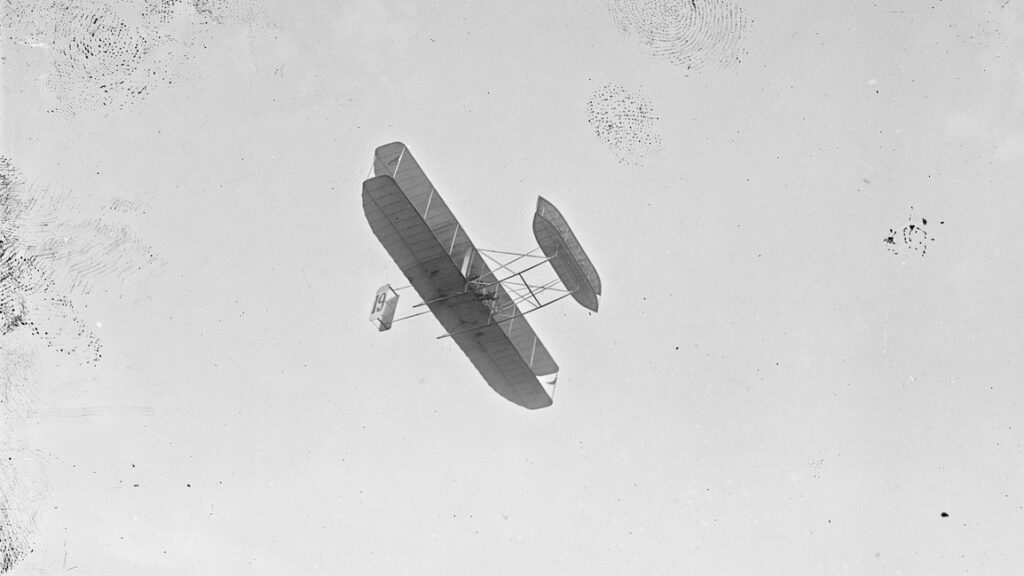
Shortly after this achievement, Aeroclub de France awarded de Lambert a Gold Medal. In addition, he was also conferred Chevalier of the Legion of Honour. The interesting fact is that, despite being a member of an old French family, he was awarded the latter honour as foreigner, due to the fact de Lambert´s mother was Russian and he was born abroad.
In June of 1910, de Lambert took part in aviation meeting held by the French aero club in Issy-les-Moulineaux. According to the press reports from the era, his outstanding and thrilling flying display excited the crowd so much, the security forces were called to calm the spectators down.
However, the hydrofoils, from which de Lambert began his engineer career, remained his main passion. In 1913, the boat he designed together with Paul Tissandier, set the world speed record on water, achieving 98.6 kph.
Charles de Lambert dedicated himself to hydrofoils increasingly and, with the end of the Great War, ceased his aviation activities. At the beginning, his boat manufacturing company, Société anonyme des hydroglisseurs, achieved a commercial success and sold several powerful hydrofoils to Indochina and West Africa. Nevertheless, this mean of transport did not gain any significant popularity and soon de Lambert´s business failed.
In a short time, Charles de Lambert, the once popular and admired French aviation pioneer, sank into oblivion. He died poor and forgotten, on 26th February 1944, aged seventy-eight.
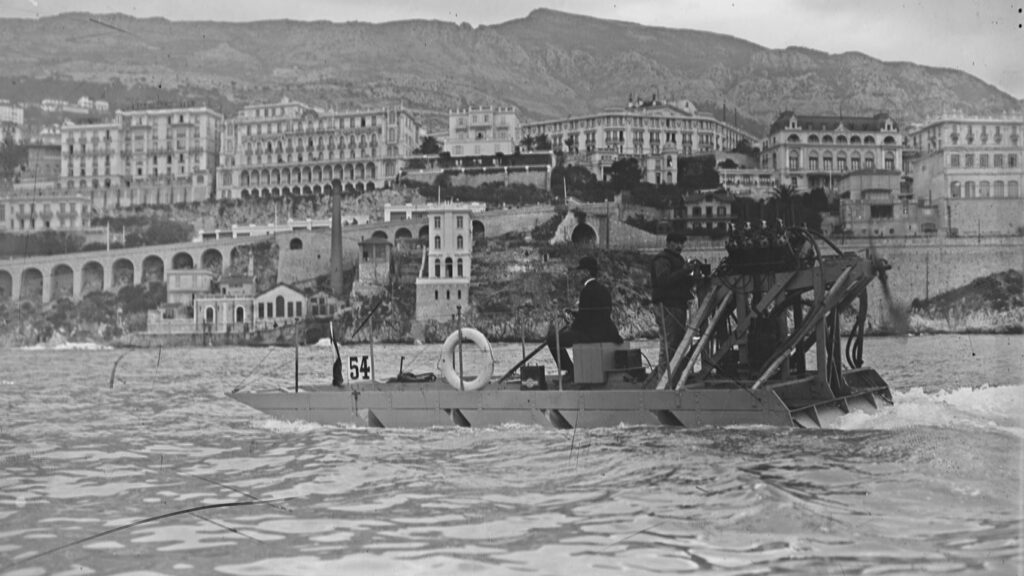
Cover photo: Charles de Lambert in the Wright flyer, during his flying course at Pau (Bibliothèque nationale de France, ark:/12148/btv1b9018989x, cropped)

